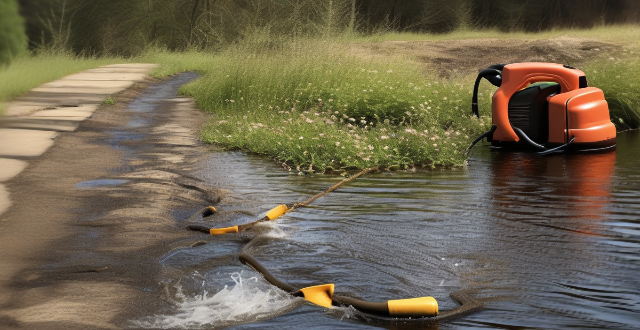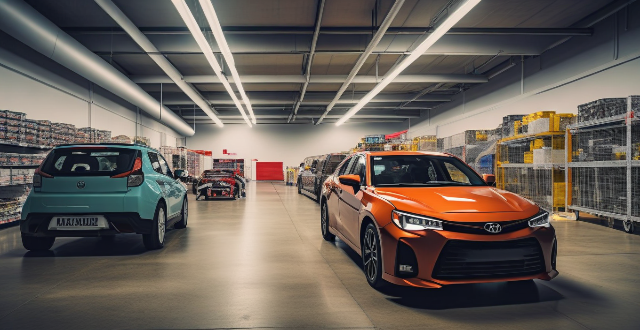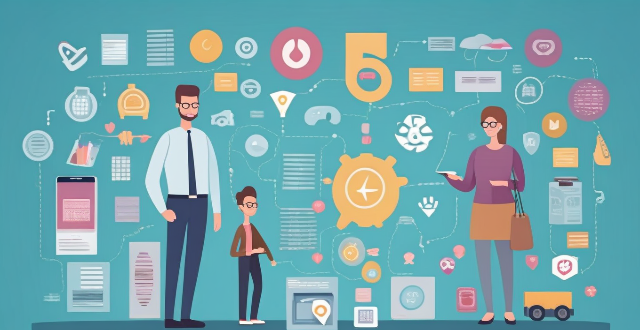Use Wipe

How can I reduce the amount of cleaning required after cooking a meal ?
Cleaning up after cooking can often feel like a chore, especially after spending time preparing a delicious meal. However, there are several strategies you can implement to minimize the mess and make cleaning up quicker and easier. Here's a detailed guide on how to reduce the amount of cleaning required after cooking: Before You Start Cooking - Plan Ahead: Decide what you will cook and read through the recipe completely. This helps you prepare all necessary ingredients and tools beforehand, reducing the need to clean up multiple times during cooking. Prep Your Workspace: Clear your countertops and clean them thoroughly before you start cooking. A clean work area means less mess to clean up later. Use Non-stick Cookware: Non-stick pans and bakeware require less oil or butter, making them easier to clean with just a quick wipe down. Set Up a Spill Station: Place a sheet of foil under or beside the stove to catch drips and spills, which can be easily thrown away after cooking. While You Are Cooking - Clean as You Go: Wash utensils and dishes immediately after using them. This prevents food residue from drying up and becoming harder to clean. Use Covers on Pots and Pans: This reduces splatters and saves you from having to wipe down the stove and surrounding surfaces. Contain Small Messes: Use a small bowl to hold waste like vegetable peels or fish bones rather than letting them spread over the counter. After You Have Cooked - Soak Dishes: If you have dishes that are difficult to clean, fill them with hot water and a little detergent to soak while you eat. This makes them much easier to clean later. Wipe Down Appliances: Give your appliances like blenders, mixers, or food processors a quick wipe down after use to remove any splatters. Clean the Stove Top and Countertops: Wipe these areas down with a damp cloth after cooking to avoid crusty buildup. General Tips for Efficiency - Simplify Your Recipes: Opting for simpler recipes can reduce the number of dishes used and ingredients prepared. Cook One-Pot Meals: One-pot meals like stews, casseroles, or stir-fries require fewer dishes to wash. Use Disposable Items Wisely: While not environmentally friendly, disposable items like baking paper, foil, or paper plates can be used strategically in situations where cleanup is particularly challenging.

How do I use chopsticks properly when eating Japanese food ?
Using chopsticks is an art form in Japan, and there are certain etiquette rules that you should follow to show respect for the culture. Here's a step-by-step guide on how to use chopsticks properly when eating Japanese food: 1. Holding the Chopsticks: Hold the first chopstick (the one closer to the tip of the food) like a pencil, resting it between your thumb and index finger. This is your stationary chopstick. Place the second chopstick (the one closer to the end of the food) underneath the first chopstick, resting on your ring finger. This is your moving chopstick. 2. Picking Up Food: Use the tips of the chopsticks to scoop up food rather than pincing it with the ends. This is considered more polite and traditional. For larger pieces of food, it's acceptable to use both chopsticks to pick them up. For smaller items, try using just one chopstick if possible. 3. Eating: If you need to dip your food in soy sauce or another sauce, do so lightly and minimally. Overdoing it can be seen as wasteful. Place the food in your mouth from the chopsticks without making any noise. Chew with your mouth closed. 4. Chopstick Etiquette: Avoid playing with your chopsticks, tapping them on the table, or leaving them standing in your food. These actions are considered impolite. Never use your chopsticks to point at people or gesture with them. This is rude and associated with funeral rites in Japan. Do not lay your chopsticks across your plate or bowl as this resembles incense sticks at a funeral. Instead, rest them on the chopstick rest provided or on the edge of your dish. 5. After Eating: It's common to wipe the ends of the chopsticks before and after use with the small towel or oshibori provided. If you're at a restaurant, leave the chopsticks as they are when you finish eating. Do not put them back in their original packaging or wrap them up. By following these guidelines, you'll not only avoid offending anyone but also show that you respect and appreciate Japanese dining culture. Remember, practice makes perfect!

How do I properly use and maintain electrical equipment ?
Electrical equipment requires proper use and maintenance to ensure safety, efficiency, and longevity. Key tips include reading the manual, inspecting before use, avoiding overloading, keeping away from water, cleaning regularly, checking wiring, replacing parts as needed, storing properly, unplugging when not in use, using surge protectors, and avoiding DIY repairs for significant issues. Following these guidelines helps extend the lifespan of electrical equipment and minimizes risks associated with their use.

How do I properly clean and sanitize second-hand items before using them ?
The provided text offers a comprehensive guide on properly cleaning and sanitizing second-hand items to ensure their safety for use. The steps are divided into general cleaning procedures, specific instructions for different types of items like clothing, footwear, furniture, kitchenware, toys, and electronics, and additional tips on sanitization. The process involves inspection, initial cleaning, disassembly (if needed), soaking for smaller items, and using appropriate cleaning methods for various items. Sanitizing tips emphasize the wise use of disinfectants, ensuring ventilation, protecting oneself from harsh chemicals, and drying items thoroughly to prevent mold growth. This detailed guide ensures that second-hand items are not only reused but also recycled safely.

How often should I disinfect my home to prevent the spread of germs ?
To prevent the spread of germs in your home, it's important to disinfect high-touch surfaces daily, including doorknobs, light switches, countertops, bathroom fixtures, and electronic devices. Floors and carpets should be cleaned regularly as well, with hardwood floors mopped weekly and carpets vacuumed twice a week and steam cleaned monthly. Soft furnishings like couches and chairs should be vacuumed weekly, and bedding should be washed in hot water every week. In the kitchen and eating areas, cutting boards and utensils should be washed after each use, and dishes and cups should be cleaned after each meal. Laundry, including clothes and towels, should be washed immediately after wearing or use. Children's toys should also be disinfected regularly, with plastic toys wiped down weekly and plush toys washed monthly. When disinfecting, it's important to follow the instructions on the product label, avoid mixing cleaning products, wear gloves to protect your hands, ensure proper ventilation by opening windows or turning on fans, clean before disinfecting, use paper towels to avoid cross-contamination, don't forget to clean and disinfect trash cans, and sanitize sponges and brushes regularly. By following these guidelines, you can help prevent the spread of germs within your home and maintain a healthy environment for you and your family.

What are some time-saving tips for organizing my kitchen pantry ?
Organizing your kitchen pantry can save time and make meal preparation more efficient. Here are some tips: declutter, use clear containers, label everything, group like items together, use shelves and racks, rotate stock, keep a pantry inventory list, and regularly clean your pantry. These strategies will help you create a functional and organized space that meets your needs.

How can I create an effective window cleaner without using alcohol or ammonia ?
In this guide, we discussed the steps to create a homemade window cleaner that is safe, non-toxic, and environmentally friendly without using alcohol or ammonia. The ingredients needed for this solution are white vinegar, distilled water, lemon juice, liquid soap (preferably natural and biodegradable), and a spray bottle. To make the solution, mix 1 cup of distilled water, 1/4 cup of white vinegar, 1 tablespoon of lemon juice, and 1/2 teaspoon of liquid soap in a spray bottle. Shake the bottle well to ensure that all the ingredients are mixed thoroughly. Test the solution on a small area first before using it on all your windows. Apply the solution onto the window surface and wipe it off with a clean, lint-free cloth or paper towel. Use a circular motion to avoid leaving streaks. Dry the windows completely with a dry cloth or paper towel. Some tips to keep in mind while using this solution are to use a microfiber cloth for best results, avoid cleaning windows in direct sunlight, use a soft-bristled brush for stubborn stains, and store the solution in a cool, dark place to prolong its shelf life. By following these simple steps, you can enjoy clean and streak-free windows while also being environmentally conscious.

How can I quickly clear out and organize my desk area ?
Clearing out and organizing your desk area is a task that requires both physical effort and mental clarity. Here are some steps to help you get started: ### Step 1: Remove everything from your desk First, take everything off your desk. This includes papers, pens, books, electronic devices, and any other items that may be cluttering up your workspace. - Papers: File them away or recycle them if they are no longer needed. - Pens and pencils: Place them in a cup or holder. - Books: Store them on a nearby shelf or in a cabinet. - Electronic devices: Unplug them and store them in a safe place. ### Step 2: Clean your desk Once everything is off your desk, it's time to clean it. Use a damp cloth to wipe down the surface of your desk, being sure to get into all the nooks and crannies. If there are any stubborn stains, use a small amount of soap and water to remove them. ### Step 3: Organize your space Now that your desk is clean, it's time to start organizing your space. Here are some tips: - Create zones: Designate specific areas for different tasks. For example, one side of your desk could be for writing and another for computer work. - Use storage containers: Invest in some storage containers or drawer dividers to keep small items organized. - Label everything: Label folders, boxes, and drawers so you know where everything goes. - Keep only what you need: Don't let unnecessary items clutter up your workspace. Only keep what you need within arm's reach. ### Step 4: Maintain your organization Finally, it's important to maintain your newly organized desk area. Make sure to put things back where they belong after each use, and take a few minutes at the end of each day to tidy up your workspace. By doing this, you'll be able to keep your desk area clean and organized for years to come!

How often should I use a language learning app to see significant improvement ?
To see significant improvement with a language learning app, it's recommended to use the app daily for at least 10-15 minutes, setting weekly targets and focusing on consistency over intensity. Combining app use with real-world interactions and adjusting your routine based on progress tracking are also key strategies.

Is there a difference between PPE for medical use versus industrial use ?
The text discusses the differences between personal protective equipment (PPE) for medical use and industrial use. It explains that these differences mainly concern the level of protection required, the type of hazards encountered, and the specific features of the equipment designed to address those hazards. Medical professionals often deal with infectious diseases and thus require PPE that can protect them from pathogens like viruses and bacteria. This typically involves higher levels of protection, such as respiratory protection with N95 respirators or equivalent, which filter out airborne particles, and blood-borne pathogen protection with gloves, gowns, and face shields or goggles to prevent contact with blood and bodily fluids. Industrial workers face different types of hazards, including chemical exposure, physical injuries, and environmental factors. Their PPE tends to focus on chemical protection with protective suits, gloves, and boots made from materials resistant to specific chemicals or solvents, and physical protection with hard hats, safety glasses, and high-visibility clothing to prevent injuries from machinery or construction sites. The primary hazard in a medical setting is biological agents, such as viruses, bacteria, and other pathogens that may be present in patients' blood or other bodily fluids. Workers in industrial settings face a variety of hazards, including but not limited to chemical exposure from handling toxic substances, physical dangers from heavy machinery and equipment operation, and environmental risks such as extreme temperatures or noise pollution. PPE for medical use often includes features like fluid resistance with materials that are impermeable to liquids to prevent contamination, antimicrobial treatment with some PPE items having an antimicrobial coating to reduce the growth of microorganisms, and compatibility with other medical equipment designed to be used in conjunction with other medical tools and devices without interference. PPE for industrial use emphasizes features like durability with materials that can withstand harsh conditions and repeated use, comfort and mobility often lighter and more flexible materials to allow for ease of movement over long periods, and specialized functionality such as gloves having enhanced grip or shoes having steel toes for added protection against physical impacts.

Can I use multiple coupon codes on a single transaction ?
The ability to use multiple coupon codes on a single transaction varies by retailer. Some, like Amazon and Target, allow it while others, such as Best Buy and Macy's, do not. To maximize savings, shoppers should read coupon terms carefully, stack coupons when allowed, use them wisely, sign up for newsletters, and follow retailers on social media for exclusive offers.

Is it necessary to use props while practicing yoga poses ?
Props can be beneficial for alignment, modification, deepening practice, and comfort in yoga. However, they should be used wisely to avoid over-reliance or incorrect use. Individual needs and preferences also play a role in deciding whether to use props while practicing yoga poses.

How do I use a mandoline slicer safely and effectively ?
This guide provides step-by-step instructions for safely and effectively using a mandoline slicer, emphasizing preparation, safety precautions, slicing technique, and cleaning procedures to ensure efficient food prep while minimizing the risk of injury.

Are lithium batteries safe to use ?
Lithium batteries have become an integral part of modern technology, powering a wide range of devices from smartphones to electric vehicles. However, concerns about their safety have been raised due to incidents of overheating and fires. In this article, we will explore the safety aspects of lithium batteries and provide guidance on how to use them safely. One of the main safety concerns with lithium batteries is the risk of overheating and catching fire. This can occur if the battery is damaged, improperly charged, or exposed to extreme temperatures. When a lithium battery overheats, it can cause a chemical reaction that leads to thermal runaway, which is a self-sustaining process that can result in a fire or explosion. Another safety concern associated with lithium batteries is the potential for chemical hazards. The chemicals used in lithium batteries can be toxic and harmful to human health if they are ingested, inhaled, or come into contact with skin or eyes. It is important to handle these batteries with care and dispose of them properly to avoid any potential risks. To minimize the risks associated with lithium batteries, it is essential to follow some basic safety tips: 1. Use genuine products from reputable manufacturers to ensure that the battery meets safety standards. 2. Avoid overcharging by not leaving your device charging unattended and avoiding using cheap chargers that may overcharge the battery. 3. Store your lithium batteries in a cool, dry place away from direct sunlight and extreme temperatures. 4. Inspect your batteries regularly for any signs of damage or swelling, and replace them if necessary. 5. Dispose of your old lithium batteries properly by taking them to a recycling center or following the manufacturer's instructions. 6. Follow the manufacturer's guidelines for your specific device and battery. 7. Keep lithium batteries out of reach of children as they may pose a choking hazard. 8. Use protective cases or covers for your devices to prevent damage to the battery. 9. Avoid dropping or mishandling your device as this can damage the battery and increase the risk of overheating. 10. Seek professional help if you notice any issues with your battery, such as swelling or leakage. In conclusion, while there are some safety concerns associated with lithium batteries, following these safety tips can help reduce the risks and ensure that you use them safely. By being cautious and responsible, you can enjoy the benefits of these powerful batteries without compromising your safety.

How do I use Apple Pay in stores ?
Apple Pay is a convenient and secure way to make purchases using your Apple device. Here's how you can use it in stores: 1. Set up Apple Pay on your device by opening the Wallet app, tapping the plus sign, and following the prompts to add a new card. 2. Use Apple Pay at the checkout by double-clicking the side button on your iPhone, holding it near the contactless reader until you see Done and a checkmark, and entering your PIN or signing your name if prompted. 3. Confirm your payment by looking for a confirmation on your device. 4. Keep your receipt in case you need to return or exchange an item.

How can I streamline my laundry process to be more productive ?
Streamlining your laundry process can save time and reduce stress. Here are some tips to help you be more productive with your laundry tasks: 1. **Preparation Phase**: - Gather all necessary laundry supplies like detergent, fabric softener, and stain removers. - Sort clothes by color and fabric type. - Establish a routine for doing laundry and use proper storage for dirty and clean clothes. 2. **Washing Cycle**: - Avoid overloading the washing machine and separate heavy items from delicates. - Choose the appropriate wash cycle based on soil levels and adjust water temperature for energy efficiency. 3. **Drying Process**: - Dry similar items together and clean the lint screen after every use to improve dryer efficiency. - Use timed drying to avoid overdrying and fold clothes immediately to prevent wrinkles. 4. **Organization and Maintenance**: - Fold or hang clothes immediately after drying to reduce wrinkling and put away clean clothes to avoid clutter. - Keep the laundry area clean by wiping down surfaces after each use and regularly cleaning the washing and drying machines. By implementing these steps, you can make your laundry process more efficient, saving time and effort in the long run.

Is it ethical to use genetically modified organisms (GMOs) in agriculture ?
The use of genetically modified organisms (GMOs) in agriculture is a complex and contentious issue that raises ethical questions. Proponents argue that GMOs offer benefits such as increased crop yields, reduced pesticide use, improved nutrient content, and environmental sustainability. Opponents raise concerns about human health risks, economic concentration, environmental impact, and ethical considerations. Key ethical considerations include scientific evidence, public perception, equity and access, environmental stewardship, ethical principles, regulatory oversight, long-term monitoring, global collaboration, innovation and alternatives, and education and awareness.

Are fast charging car chargers safe to use ?
Fast charging car chargers have raised safety concerns due to risks such as overheating, battery degradation, and electrical hazards. To ensure safe use, it is recommended to use approved chargers, follow manufacturer's guidelines, monitor charging temperatures, avoid overcharging, inspect wiring and connections, use a surge protector, and store the charger properly. By following these tips, the risks associated with fast charging can be minimized.

What are some common ways that companies collect and use personal data ?
Companies employ various direct and indirect methods to collect personal data, which they then use for marketing, product development, enhancing customer experiences, and ensuring security.

What are some common mistakes to avoid when taking photos with a smartphone ?
When taking photos with a smartphone, it's important to avoid common mistakes that can negatively impact the quality of your images. Here are some tips to help you take better photos: 1. **Not Cleaning the Lens**: A dirty lens can cause blurry or distorted images. Make sure to clean your phone's camera lens before taking photos. 2. **Ignoring Composition**: Follow the rule of thirds and try to balance the elements in your photo to create a more visually appealing image. 3. **Inconsistent Lighting**: Use natural light whenever possible and be aware of shadows and highlights in your photo. 4. **Not Holding the Phone Steady**: Shaky hands can result in blurry photos. Support your arms against a solid surface or use a tripod to minimize camera shake. 5. **Zooming In Too Much**: Avoid zooming in too much if possible, as most smartphones use digital zoom which can degrade image quality.

How can celebrities use their influence for social change ?
Celebrities have a unique opportunity to use their influence for social change. They can leverage their fame and platform to bring attention to important issues, inspire their fans to take action, and make a positive impact on the world. Celebrities can use their platform to raise awareness about important social issues, inspire their fans to take action by sharing their own experiences and stories related to social issues, partner with organizations that are working towards social change, use their talents and skills to support social change initiatives, and advocate for policy changes at the local, national, or international level. By doing so, celebrities can help shape laws and regulations that promote social justice and equality.

How do data protection regulations impact the use of cookies on websites ?
Data protection regulations have significant impacts on the use of cookies on websites. Website owners must comply with strict rules regarding explicit consent from users, transparency and disclosure of cookie use, minimization of data collection, data security, and avoidance of penalties for non-compliance. By doing so, they can protect user privacy and build trust while still providing an optimal user experience through the use of cookies.

How do companies collect and use my personal data online ?
Companies collect and use personal data online for various purposes, including marketing, advertising, customer service, and improving their products or services. They do this through cookies and tracking technologies, social media platforms, email marketing, and customer service interactions. By analyzing this data, companies can gain insights into user behavior and preferences, which they can use to improve their products or services and target users with personalized advertising.

Can I use Apple Pay to send money to friends or family ?
The article provides a summary of how to use Apple Pay to send money to friends or family through the Apple Cash feature. It outlines the steps to set up Apple Cash, send money using Apple Pay, and receive money through Apple Pay. Additionally, it mentions other ways to use Apple Pay for transactions such as making purchases, paying for services, splitting bills, and donating to charities.

How can I use social media to drive traffic to my website ?
Social media is a powerful tool that can be used to drive traffic to your website. Here are some tips on how to use social media effectively: create quality content, share your content on social media, engage with your audience, use paid advertising, and collaborate with influencers. By following these tips, you can increase your website's visibility and attract more visitors.